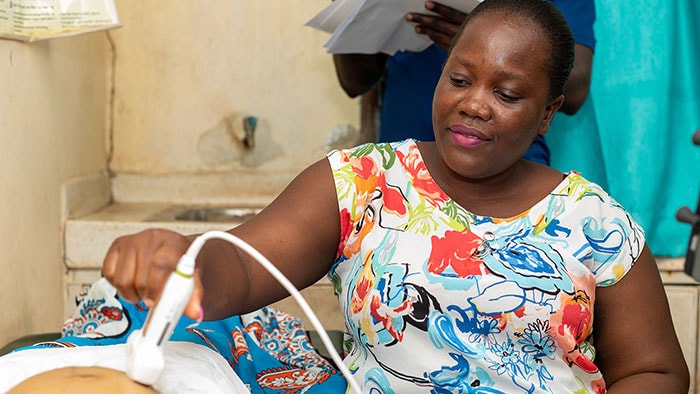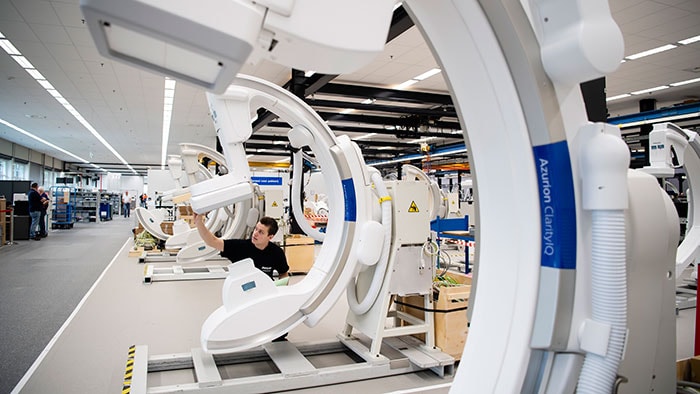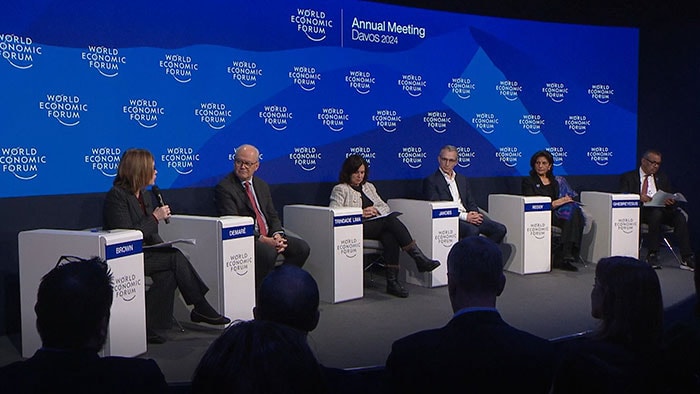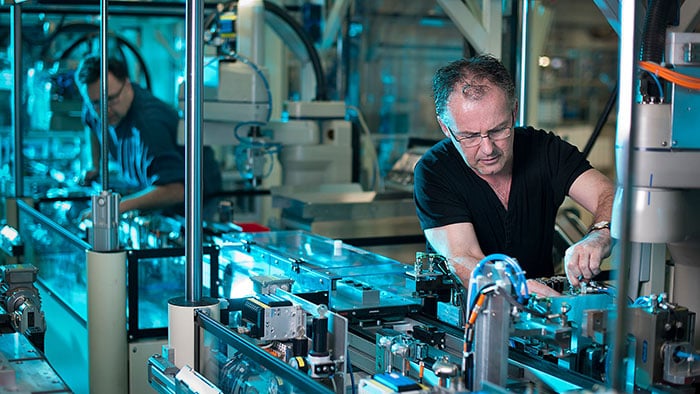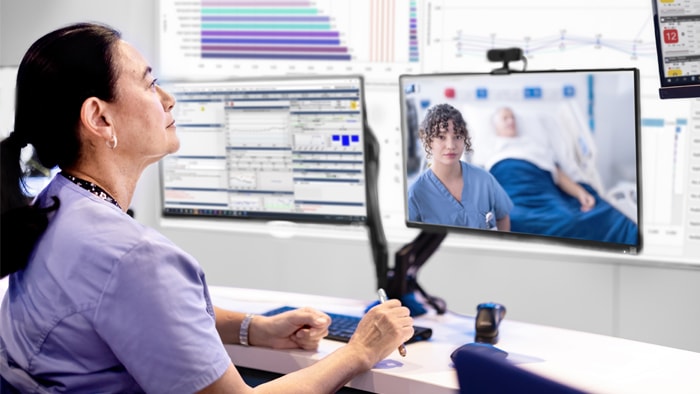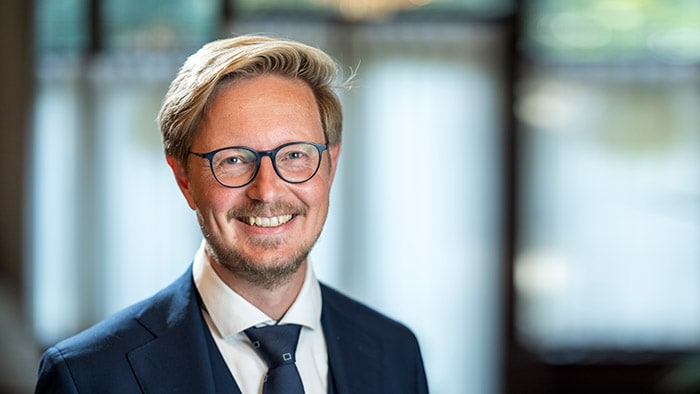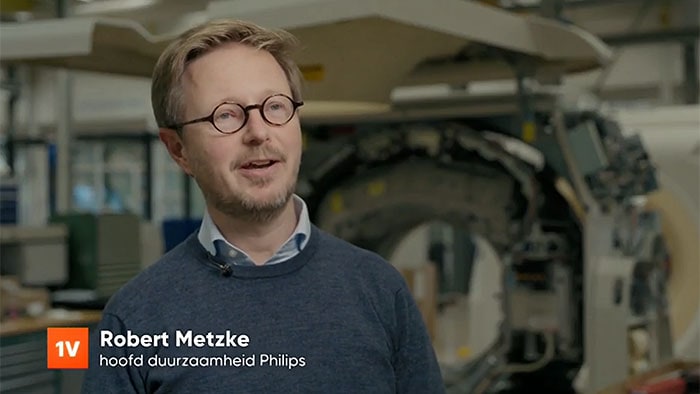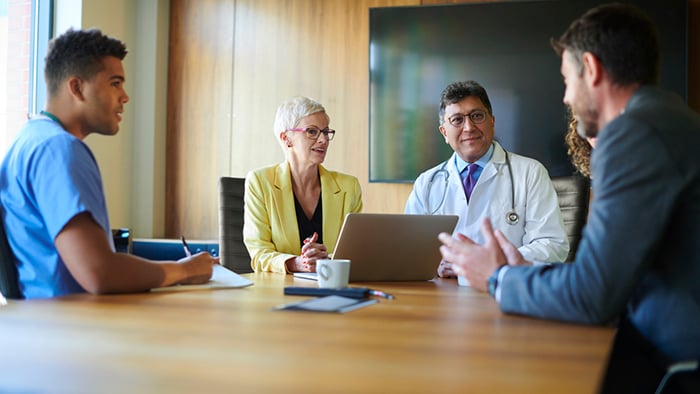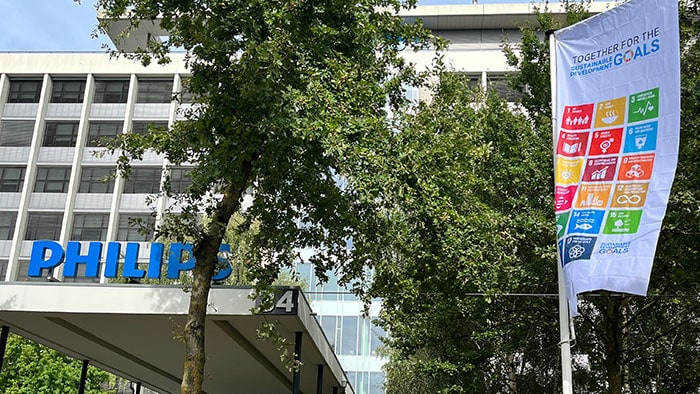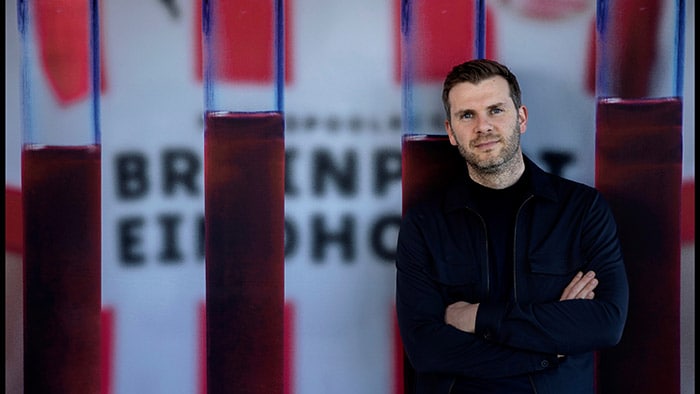Meer klanten behouden, een hogere inruilwaarde en bijna 3400 medische apparaten die jaarlijks verantwoordelijk worden verwerkt. Close The Loop, het circulariteitsprogramma van Philips, kent sinds 2018 een sterke groei in wereldwijd hergebruik van medische apparaten. Het programma was een finalist voor de Circular Award 2023.
Hoewel het onderwerp circulariteit steeds bekender wordt, is er nog veel werk aan de winkel om bedrijven circulair te maken. In de afgelopen 6 jaren zijn er net zoveel grondstoffen gebruikt als in de laatste eeuw. Slechts 7 procent van deze materialen worden hergebruikt. Dat betekent dat meer dan 90 procent wordt verspild. “Bij Philips doen we dat anders. Sustainability was en is een integraal onderdeel van onze strategie. We zijn in Best bijvoorbeeld al jaren CO2-neutraal”, zegt Jeroen van Nistelrooij, Product and Asset Management Lead bij Philips. Hij werkt samen met zijn team aan de praktische invoering van ons circulariteitsprogramma.
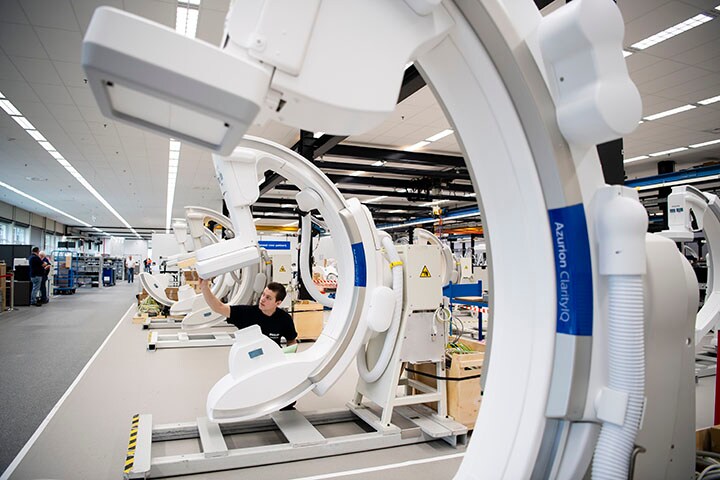
Duurzame ambities
Philips knapt al ruim 30 jaar de eigen apparaten weer op. Dat proces noemen we refurbishen. Sinds 2020 neemt de organisatie alle grote medische apparatuur van klanten terug om te upgraden met nieuwe onderdelen en software. Dit circulariteitsprogramma van Philips heet ‘Close The Loop’ en is in het leven geroepen om bij te dragen aan de duurzame ambities van het gezondheidstechnologiebedrijf. En die ambities liggen hoog. In 2022 bestond 15 procent van de omzet uit circulaire producten en diensten. Het doel is om dat percentage in de komende tien jaar zelfs te verdubbelen.
Wereldwijde initiatieven
Het startschot van Close The Loop kwam van voormalig CEO Frans van Houten. Hij gaf in 2018 aan dat Philips op termijn alle apparaten weer zou kunnen hergebruiken. Sindsdien worden er wereldwijd allerlei initiatieven en samenwerkingsverbanden opgezet. Naast de revisie van apparaten, zijn er bij Philips ook processen voor Parts recovery, Remanufacturing en Recycling opgezet. Daarnaast is er wereldwijd een netwerk opgezet met lokale partners die systemen met weinig restwaarde verantwoordelijk kunnen recyclen. Jeroen: “Deze lokale partijen voldoen aan dezelfde standaarden als onze eigen productielocaties. Daar verwerken we de retourproducten veilig en zonder afval.”
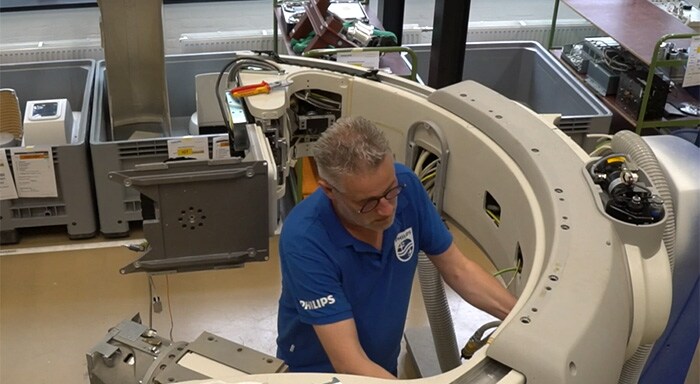
Waarde doorgeven aan klanten
“Wij willen zoveel mogelijk waarde genereren uit onze innovaties en deze waarde doorgeven aan onze klanten”, zegt Jeroen. “Een van de beste manieren om dat te doen is de levensduur van onze medische systemen via upgrades zo lang mogelijk te maken. Als dat niet lukt, ruilen we de systemen in en retourneren ze naar ons Circular Equipment Center in Best. Afhankelijk van het ontwerp ondergaan deze systemen een volledige revisie of een remanufacturing-proces.”
Beter dan ooit
Systemen die aankomen in Best ondergaan eerst een uitvoerige inspectie. De systemen worden ontmanteld, waarna ze een hardware- en software-upgrade krijgen naar de huidige standaarden. Het eindresultaat is een product dat er weer net zo goed uit ziet en dezelfde prestaties levert als een nieuw product. Sterker nog: als de refurbished systemen de fabriek verlaten, zijn ze beter dan ooit.
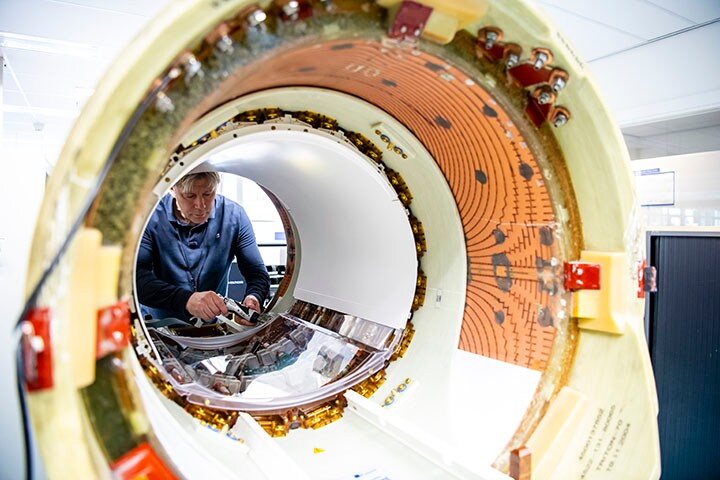
Goed voor Philips, klanten en de wereld
Het circulariteitsprogramma zorgt dat apparaten en onderdelen maximaal worden hergebruikt. Zo wordt er minder verspild en dat is natuurlijk goed voor de wereld. Het programma is daarnaast goed voor Philips en zijn klanten. Jeroen: “Veel bedrijven twijfelen om de stap naar circulariteit te maken, omdat ze vrezen dat de benodigde investeringen veel geld kosten. Wij bewijzen dat het anders kan. Het kost ons geen geld, het levert juist heel veel extra waarde op. We koppelen de voordelen van de circulaire economie aan een strategie om onze klanten te behouden. Dat is duurzaam winstgevend.”
Meerdere voordelen
Volgens Jeroen heeft het programma meerdere voordelen voor de hele keten. “We hebben 5 tot 10 procent meer klanten behouden. De inruilwaardes zijn tot 30 procent gestegen. En dat vertaalt zich weer in een toegenomen klanttevredenheid. We onderzoeken daarnaast wat de CO2-reductie is van onze aanpak. En het hergebruik van materiaal zorgt ervoor dat we minder grondstoffen aan de aarde onttrekken.”
Doorontwikkeling
Circulariteit is een belangrijke stap in de verduurzaming van de bedrijfsvoering van Philips. Er wordt nu vooral gekeken naar het duurzaam hergebruiken van apparaten, de volgende stap is om nog meer rekening te houden met circulariteit bij het ontwerp. Jeroen: “Hergebruik is goed, maar het is nog beter als de apparaten langer bij de klanten kunnen blijven staan en die apparaten dezelfde kwaliteit kunnen blijven leveren met nieuwe componenten of verbeterde software. Met deze doorontwikkeling in technologie verduurzamen we de wereld.”
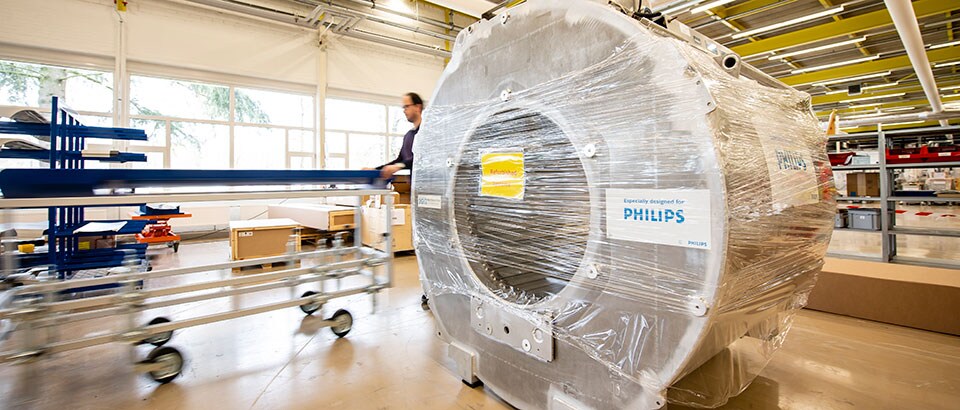
Making the world more sustainable with Philips’ circular program
Customer retention, higher trade-in value and nearly 3,400 medical devices responsibly disposed of each year. Philips' circularity program, Close The Loop, has seen strong growth in global medical device reuse since 2018. The program was a finalist for the Circular Award 2023.
Although circularity is getting more attention, there is still more work to be done to make companies circular. In the past 6 years, the amount of raw materials that have been used are as much as those used in the last century. Only 7 percent of these materials are reused. That means more than 90 percent is wasted. "At Philips, we do things differently. Sustainability is an integral part of our strategy. For example, in Best we have been carbon neutral for years," says Jeroen van Nistelrooij, Product and Asset Management Lead at Philips. Jeroen is working with his team on the practical implementation of our circularity program.

Sustainable ambitions
Philips has been refurbishing its own equipment for more than 30 years. Since 2020, the organization has been taking back all major medical equipment from customers to upgrade with new parts and software. This circularity program at Philips is called "Close The Loop" and contributes to the company's sustainability targets. The ambitions are high: in 2022, 15 percent of sales consisted of circular products and services. The goal is to double that percentage in the next 10 years.
Global initiatives
The Close The Loop was initiated under former CEO Frans van Houten. In 2018, he expressed the ambition that Philips would eventually reuse all its equipment. Since then, all kinds of initiatives and partnerships have been set up worldwide. In addition to refurbishing devices, processes for Parts recovery, Remanufacturing and Recycling have been set up at Philips. In addition, a worldwide network has been set up with local partners who can recycle systems locally. Jeroen: "These local parties meet the same standards as our own production sites. At these sites we process the returned products safely and without waste."

Passing on the value to customers
"We want to generate as much value as possible from our innovations and pass that value on to our customers," says Jeroen. "One of the best ways to do that is to make the lifespan of our medical systems as long as possible with upgrades. When that fails, we return the systems to our Circular Equipment Center in Best. Depending on the design, these systems undergo a complete overhaul or a remanufacturing process."
Better than ever
In Best the systems undergo a complete inspection. Then the systems are dismantled, after which they receive a hardware and software upgrade to current standards. The end result is a product that looks like new and delivers the same performance. In fact, when the refurbished systems leave the factory, they are better than ever.

Good for Philips, customers and the world
The circularity program ensures that systems and parts are maximally reused. This way, there is less waste. The program is also good for Philips and its customers. Jeroen: "Many companies hesitate to make the step to circularity because they fear that the necessary investments are high. We prove that this can be done differently: it actually delivers a lot of extra value. We couple the benefits of the circular economy with a strategy to retain our customers. That is sustainably profitable."
Multiple benefits
According to Jeroen, the program has multiple benefits for the entire supply chain. "We have retained 5 to 10 percent more customers. Trade-in values have increased up to 30 percent. And that translates into increased customer satisfaction. We are also studying what the CO2 reduction is from our program. And the reuse of material ensures that we extract fewer raw materials from the earth."
Further development
Circularity is an important step in making Philips' operations more sustainable. The first focus is on the sustainable reuse of devices; the next step is to embed circular thinking in the design. Jeroen: "Reuse is good, but it's even better if the devices can stay with customers longer and those devices can continue to deliver the same quality with new components or improved software. With this ongoing development in technology, we are making the world more sustainable."
Deel op social media
Topics
Contact

Tommie Dijstelbloem
Woordvoerder Philips Benelux Tel: +31 6 19 28 83 20
You are about to visit a Philips global content page
Continue


